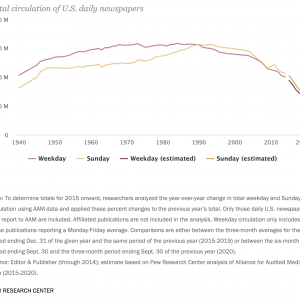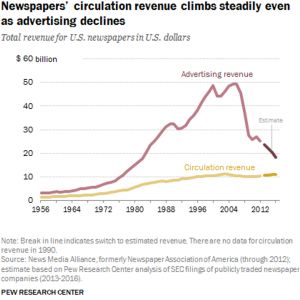The 2020 brutal murder of George Floyd by white police officers was an impetus for many newsrooms across the country to re-energize diversity efforts. These reckonings around racial justice and equity promised internal mentorship programs, diverse event programming, more open conversations about systemic racism, additional funding for the recruitment and retention of diverse news workers, and new positions focused on diversity, equity, and inclusion (DEI) within the newsroom.
But in the rearview mirror, 2022 is a picture of slow progress. Many of the DEI promises have not been fully realized. Feedback from journalists is familiar and enduring — some change, not enough. And results fromNorthwestern’s 2021 survey show journalists of color are more likely to have concerns about the DEI efforts in their newsrooms.
In particular, journalists hired into roles that emphasize some kind of diversity and equity struggle to find consistent support.
As reported in an ongoing research project, a diversity and community editor who had been in the job for about a year said, “I’m tired, I’m always tired. This work is the work of change, work of equity change at a legacy organization is daunting, right? There’s no question about it. You know it’s going to take forever. Sometimes it feels like it’s never going to happen.”
Women journalists of color, plagued by slow DEI progress within organizations, also find themselves targets of abuse and harassment online. In a survey of women journalists in the U.S. conducted by the Committee to Protect Journalism in 2019, 90% of respondents cited online abuse as their most significant threat. Just a year later, in an international survey fielded by UNESCO and the International Center for Journalism, 73% of women journalists reported experiencing online violence because of their work. This threat is aggravated for women with multiple identities, with Black, Indigenous, Jewish, Arab, Asian, and LGBTQIA women, in particular, facing the most severe and highest rates of online violence, as well as reporters who write about race.
The consequences are profound for the profession, which is already struggling to recruit and retain diverse talent. A survey conducted by TrollBusters International Women’s Media Foundation found that 40% of women journalists reported changing their behavior as a result of online violence, and nearly a third of respondents considered quitting the profession entirely.
The threat of online violence and the cost of deferred DEI efforts have one thing in common: News workers of color bear the burden, and these costs take a mental and physical toll. Without efforts to promote the well-being and safety of journalists of color, DEI initiatives — particularly those focused on recruitment — can create more harm.
In 2022, and likely in 2023 and beyond, it is clear that, for journalists of color, the field of journalism is hazardous.
A reporter working in DEI said it best: “Racism doesn’t just kill us with a rope around our necks. It kills us little by little. The health disparities, and the trauma, and the mental fatigue, the emotional fatigue. So those are the risks for all of us. All of us in this world who are trying to tell some of these stories. We can’t separate ourselves from them.”
Despite the grim picture, 2023’s DEI goals can support the mental health of BIPOC newsworkers, including tangible measures to address online abuse. Resilience in the face of slow progress must be supported.
Danielle K. Brown is the Cowles Professor of Journalism, Diversity, and Equality at the University of Minnesota, Twin Cities. Kathleen Searles is an associate professor of political communications at Louisiana State University.


